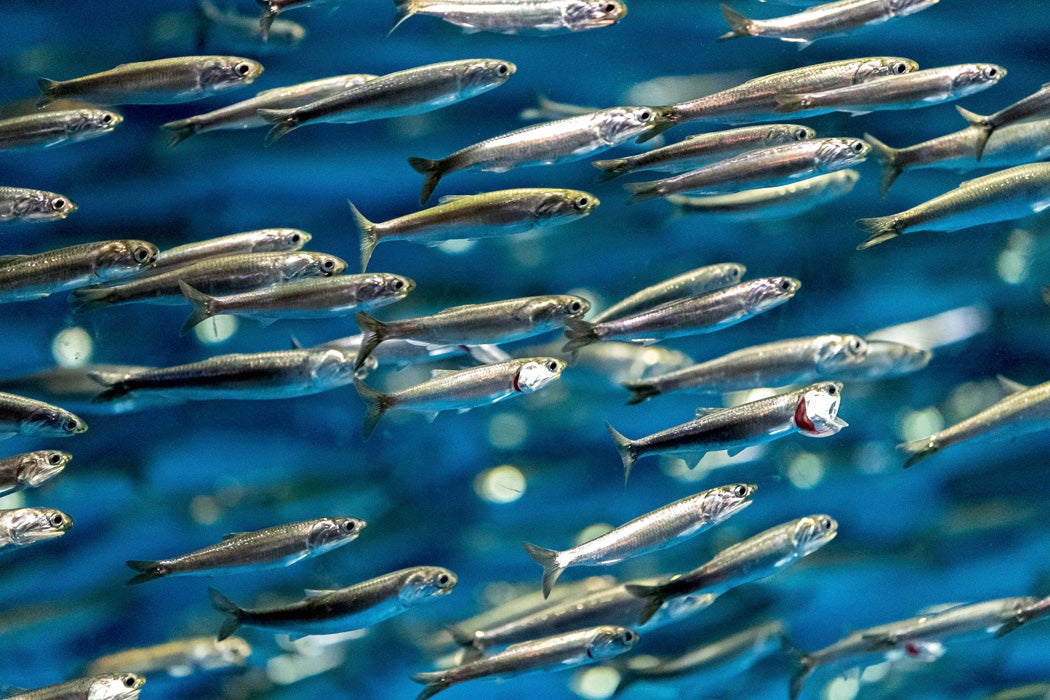In a rare moment of bipartisanship, Democratic and Republican representatives have introduced the Forage Fish Conservation Act. The act provides a variety of provisions to strengthen conservation of forage fish. Until recently, the fishery in forage species was often lightly regulated. With this new act, Representatives Debbie Dingell (D-MI) and Brian Mast (R-FL) want to ensure that forage fish are not ignored by fisheries managers. In fact, the very first provision is simply to decide on the definition of forage fish.
According to biologist Isaac C. Kaplan et al. in Environmental Conservation, forage species are fish such as herring or anchovies (or small invertebrates such as krill) that serve in the ecosystem as important food sources for larger predatory species. These fish are the food base for everything from seabirds to whales. They are also increasingly targeted directly by humans for fish meal or other purposes.
Kaplan et al., studying the impacts of forage fish management in the West Coast, note that depletion of forage species also depletes the species that eat them, including important sport and commercial species. The indirect impacts on predatory species, in turn, affect population management targets of those species. Given the unique position of forage fish at the base of the food web, Kaplan argues that forage fish populations must be managed more strictly and maintained at higher levels than most species. So for example, targets that work for swordfish or yellowtail are not acceptable for forage species, which supply a larger, multispecies market. The U.S. is starting to do more to take these species into account; krill fishing, for example, is banned in U.S. waters. Internationally, however, the problem is mostly unchecked.
Weekly Digest
Timothy E. Essington et al., writing in PNAS, identify additional threats to the forage species base. Despite increasing management attention, forage fish population collapses have occurred around the world. Forage fish tend to school tightly together, making them easy to catch even as populations drop. This makes forage fishing profitable in the face of overfishing and encourages even more fishing. Essington notes that since forage fish populations can fluctuate for a variety of reasons, sometimes fishing pressure is overlooked as a threat.
Essington’s solution is pretty simple, and by this measure the Forage Fish Conservation Act does not go far enough. Essington proposes a policy called “stop-loss,” where all forage fishing is immediately banned if forage abundance drops below a designated level. There are mechanisms in place to enforce immediate halts in other U.S. fisheries if catch targets are reached early, so it would not be difficult to apply such rules to forage species. Internationally, forage species will need to be added to existing high seas agreements, but enforcement is difficult. Maybe it isn’t everything, but the Forage Fish Conservation Act is an important step toward proper regulation of the base of the food web.







